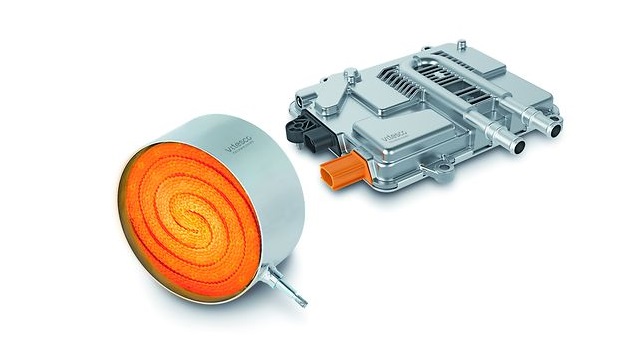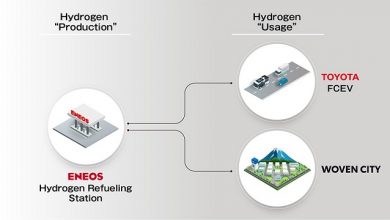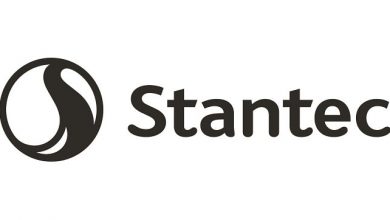Vitesco Technologies reduces emissions in high-voltage hybrid vehicles

Vitesco Technologies, a leading international supplier of advanced powertrain technologies and electrification solutions, is now making electrical catalyst heating available in high-voltage hybrid vehicles as well. Thanks to a new DC/DC converter, the heating discs of the electrically heated EMICAT catalyst can now also be supplied with electricity in high-voltage vehicles. It is already in use in vehicles with a pure combustion engine or in mild hybrids.
For Vitesco Technologies, the novel use of heating technology in the high-voltage sector is an extension of its existing product range. The innovative e-catalyst enables lowest emissions in real operation – something that is becoming increasingly important in light of forthcoming regulations such as Euro 7.
“Efficient electrification requires intelligent solutions. The perfect combination of our tried-and-tested EMICAT heated catalyst and our new DC/DC converter reduces real emissions in critical situations, namely when the combustion engine is restarted,” says Klaus Hau, Executive Vice President of the Sensing & Actuation business unit at Vitesco Technologies. “With the converter for electrical catalyst heating in plug-in hybrids, we are making an additional option for electrification available to the market.”
The challenge of plug-in hybrids: CO2 efficiency and low cold engine start emissions
Hybrid vehicles utilize their potential for CO2 savings by shutting off the combustion engine as often as possible and using electric power instead. This results in longer operating pauses in the combustion engine during which the vehicle does not emit CO2. During these phases, the engine cools down. If it is required and restarted, the exhaust flow is also cold at first – possibly too cold to convert pollutant gases in the catalyst. “In other words, the cold start is actually the rule, especially with efficiently-driven hybrids,” says Rolf Brück, head of Catalysts and Filters at Vitesco Technologies. “From the perspective of emission reduction, this is a challenge, as the greatest share of the emissions in a cycle can be generated during cold start situations.” If you want to make the best possible use of electrification in a vehicle to save CO2, a solution is required for all cold start events.
This form of exhaust gas aftertreatment has so far not been available for high-voltage hybrids – such as the increasingly popular plug-in hybrid – because the heating disc cannot be supplied directly from the high-voltage system at 200-450 V. The newly-developed DC/DC converter now generates the low voltage and power for the heating disc from the high voltage of the drive system. The compact unit is based on state-of-the-art printed circuit board technology and the latest components with small dimensions, and enables a high degree of efficiency of 95%.
The system solution, consisting of heating disc and DC/DC converter, upgrades exhaust-gas aftertreatment systems for even stricter emission standards worldwide in the future.
“The converter is designed in such a way that it can even supply multi-flow exhaust systems with multiple heating discs via separate outputs,” adds Alexander Reich, head of Product Management High Voltage Electronics at Vitesco Technologies. The likely start of production is 2023. “In the medium term, our DC/DC converter technology has the potential to supply other high-power consumers in the vehicle. Possible examples include electric roll stabilization or the electric steering assistance,” Reich adds.
Vitesco Technologies is one of only a few suppliers worldwide to offer the full range of electronics, software and system integration for powertrain electrification. The portfolio of innovative solutions for 48-volt systems and plug-in hybrids up to completely battery-based electric drives is correspondingly large. Examples include highly complex power electronics, intelligent sensor technologies, integrated axle drives as well as battery, energy and thermal management systems. This bandwidth makes it possible to supply fully developed individual components and at the same time develop sophisticated holistic systems – all from a single source.





